Traditional Red Ocean strategies can only take your mobile app so far in a market flooded with competition and price wars. Enter Blue Ocean strategies: a game-changing approach that encourages you to innovate in untapped spaces, where businesses create demand, and don’t fight over it.
By embracing Blue Ocean tactics, your app can rise above the noise and capture new audiences. According to a study, companies that adopt Blue Ocean strategies see average revenue growth of 22 percent over five years. Ready to outmaneuver your rivals? Dive in and discover how to make waves
What is a Blue Ocean strategy?
A Blue Ocean strategy means an offering doesn’t compete in the existing market space but instead creates its own space. A true Blue Ocean market has no competitors.
Businesses that prioritize a Blue Ocean strategy are often innovators in their field. Some examples of Blue Ocean companies include Tesla, Amazon, and Spotify. Instead of trying to compete in saturated marketplaces, these businesses created their own category.
In the context of mobile app marketing, a Blue Ocean strategy focuses on the following:
- Creating uncontested market space. When you build a mobile app that doesn’t compete in existing market space, you can create your own space. Apps should focus on reaching audiences through the largely untapped Blue Ocean partnership channel.
- Making the competition irrelevant. Tap into a means of connecting with audiences that drives a deeper, more trusting relationship. Most of the competition relies solely on advertising, which feels increasingly irrelevant to younger, more skeptical consumers.
- Creating and capturing new demand. Why fight to reach the same target audiences that every other mobile app in your competitive space targets? This is where the power of partnerships takes center stage. Look to your partners to develop innovative new ways to tap into your known target audience and find promotion angles that you haven’t seen with your partner’s target audience.
- Breaking the value-cost trade-off. Throughout the above actions, aim to achieve differentiation and low cost instead of falling into the Red Ocean trap of “more value/higher cost” or “less value/lower cost.”
What’s the difference between Blue and Red Ocean strategies?
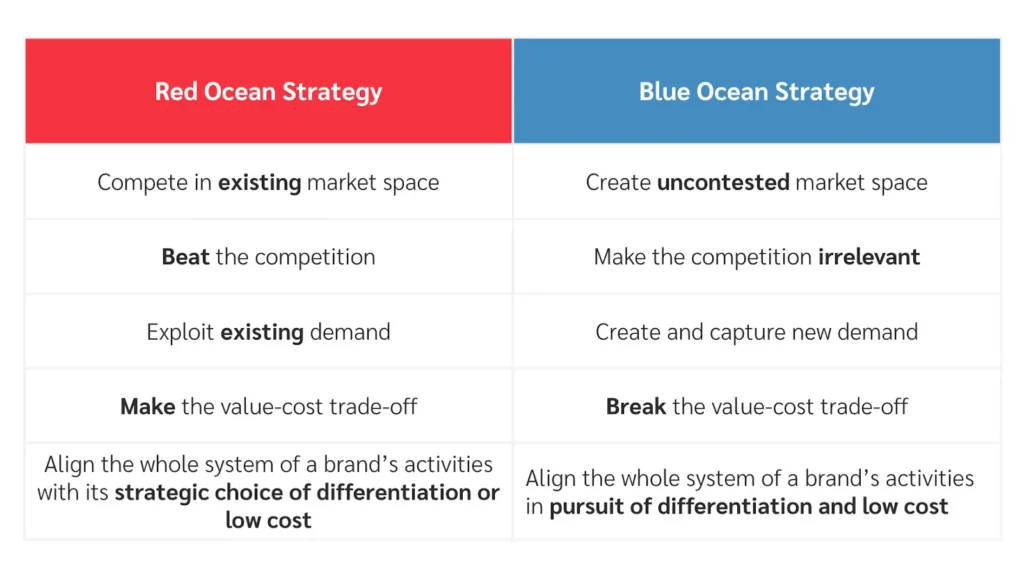
Red Oceans include today’s existing industries with cutthroat competition—hence the term “Red” Ocean. Blue Oceans includes all the industries that don’t currently exist— the unknown market space businesses haven’t explored. Like a Blue Ocean, it’s vast and almost limitless in potential. There’s untapped and nearly unlimited potential for opportunity and growth.
Key advantages of a Blue Ocean strategy
Create a new market instead of competing in an existing one. A Blue Ocean strategy uncovers opportunities to create markets where none exist.
A new category creator instead of fighting the competition. Instead of competing with traditional taxi services, Uber chose to create demand for a mobile app-based ride service.
Creates demand instead of fighting for existing demand. Apple iCloud revolutionized backing up files and images. Instead of competing with storage solutions used through external hardware or connecting their devices to their computers, Apple provided a cordless system where people only had to connect to Wifi and purchase enough space.
Why Blue Ocean Strategy works for mobile app businesses
Embracing a Blue Ocean strategy may be the best thing you can do for your business, especially when creating mobile apps.
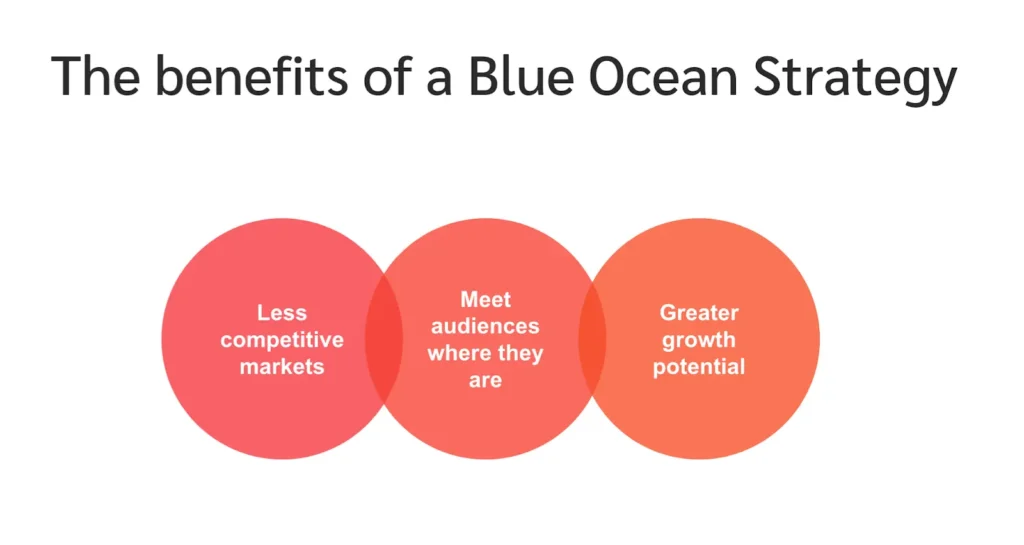
Here are the top three benefits of using a Blue Ocean strategy:
1. Less competitive markets
If your product is a unique category creator, it won’t face the fierce competition of existing big brands and corporations. Industry disruptors can still aim to meet customer needs at affordable prices.
2. Meet your audience where they are
Introducing innovations at affordable price points is a powerful combination for meeting audience needs.
3. More growth potential
When there aren’t preexisting limits or boundaries on a market space, there’s room for almost limitless growth. Brands that innovate while matching consumers’ needs for price and utility have the winning growth formula.
Mobile partnerships are a Blue Ocean move—here’s why
There’s no shortage of paid media marketing techniques for boosting app installations and engagement.
But it’s key to understand which of these techniques falls within the Red Ocean and which falls within the Blue Ocean.
Some examples of Red Ocean techniques include:
- App Store search ads from the likes of Google and Apple
- Google app Campaigns
- Facebook app Install Ads
- Display and video ads on CPI networks
These are clear Red Ocean plays—forcing marketers into a race for attention against stiff competition with limited control of the rules.
Conversely, mobile partnerships represent a Blue Ocean strategy because they offer marketers an untapped market, provide new ways of reaching a broader audience, and allow for plenty of creative control.
They also offer variety. Regardless of your goals, mobile app partnerships can help you meet them.
Mobile partnership types
Before you jump into a mobile app partnership, consider which is right for your brand. There are five main types of mobile app partnerships to choose from:
- Strategic B2B partnerships: Grocery delivery app Shipt has partnered with meal planning app eMeals. When an eMeals user receives a meal plan, they have a native option to get ingredients sent to their door by Shipt. This drives installs and incremental conversions for the Shipt and eMeals apps.
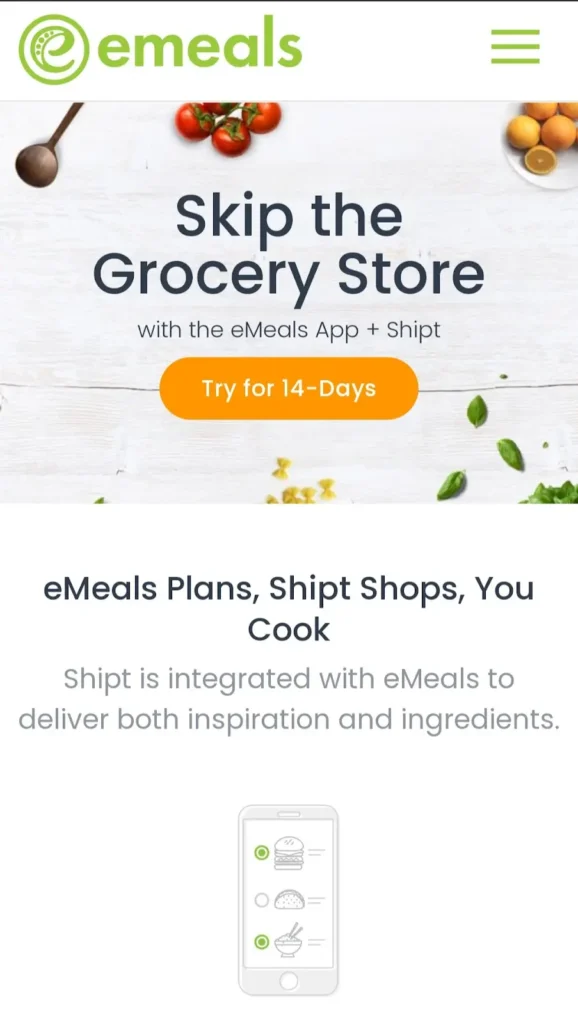
- Influencer partnerships: A well-known celebrity in a certain area of interest, like home design, posts about a new line of homeware from Target. Their link sends the user to the Target app (if installed) or mobile web (if it’s not, but with the option to install it).
- Commerce content: Premium publishers are well situated to drive awareness (and installs) of under-the-radar apps and get paid out for in-app actions.
- Affiliate partnerships: Grubhub drives installs and delivery orders by promoting app-only discounts on affiliate sites like Slickdeals.
- Software integrations: Ticketmaster partners with Spotify to show upcoming concerts by their favorite artists. If the listener purchases tickets through Ticketmaster, then Spotify earns a payout, and Ticketmaster earns incremental revenue and a possible new app user.

The four Blue Ocean frameworks for approaching mobile partnerships
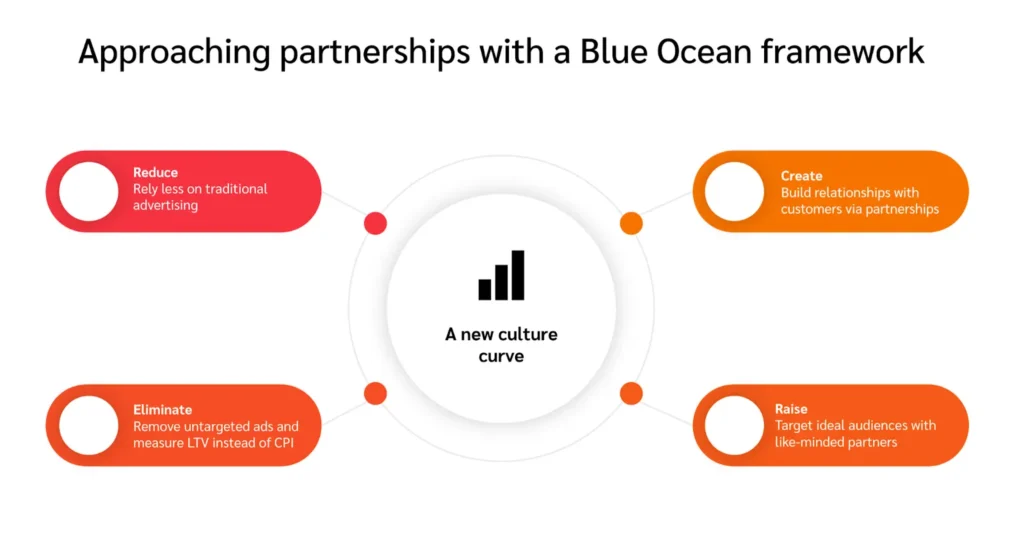
The Blue Ocean framework has four key components. Learn how these elements contribute to building effective mobile app marketing strategies.
1. Raise
Relevance and context
Traditional advertising pushes an offering onto a user through contextual or audience-based targeting. With increasing privacy regulations and data protection acts like GDPR, it’s more challenging for businesses to target people without existing first-party or zero-party data.
Partnerships usually work more effectively than traditional advertising. Instead of pushing a product onto someone who may not be part of your ideal target audience, partnerships target users who identify your product as the most relevant solution.
Content marketing
Standing out on the App Store Page is challenging. In 2022, the Apple App Store had nearly four million apps available for download. While it’s important to optimize your App page for each store, it shouldn’t be your only area of focus.
Connect with relevant partners and let them craft helpful, engaging, and useful messages for their audiences. Your partners know their audiences best, so let them be your guide.
2. Create
Build relationships with trusted parties
Many consumers, especially those from younger generations, distrust advertising–– 99 percent of Generation Z consumers hit ‘skip’ on an ad if it’s an option, and 63 percent use ad blockers to avoid online ads.
They’re more likely to listen to recommendations from influencers they follow or brands they like. Around half of Generation Z-ers who follow influencers trust their advice.
Tap into these preferences by creating relationships with partners that your target audience trusts. Doing so will open the door to more native opportunities to promote your mobile app.
Share data with partners
Advertisers no longer want to keep their data in a silo. Sharing data with partners so they can combine it with their data helps them deliver more relevant experiences for audiences. The best partnerships are often bi-directional. This is when partners also share data with you so you can provide the best user experience for the traffic they drive to your app.
Transparency between partners
There’s often data asymmetry in partnerships. An advertiser may know in near real-time how their partners’ campaigns perform. However, the partner may only receive monthly or quarterly updates from their advertiser.
This could be due to their own data policy reasons. For example, advertisers may not be able to share data so quickly due to internal regulations, or they may believe they have a power advantage by not sharing data.
Alternatively, advertisers don’t have the right technology to send performance data to their partners in a quick and digestible format.
The result is partners can’t quickly gain insights into how they can optimize the traffic they drive. Plus, it could damage the partner and advertiser relationship, as either side feels out of the communication loop.
True partnerships are built on a foundation of data transparency. When implemented effectively, partners immediately see how their campaigns drive the right kind of traffic to your mobile app. These insights allow them to adjust and optimize campaigns for better results.
3. Reduce
Reliance on traditional or standardized channels
Standard advertising methods no longer resonate with savvy consumers. For example, the average click-through rate (CTR) on Google search ads is around six percent. On Facebook, the average CTR is a shockingly low 0.9 percent.
Control of the message
As you develop relationships with trusted parties, let go of the need to control marketing messages from start to finish. Instead, prioritize building transparent relationships where you trust partners to know their audiences and create content that resonates with them.
Always provide pointers and guardrails but avoid stifling their creativity with excessive control.
4. Eliminate
Frequency
A highly relevant ad placement seen once or twice by an in-market consumer is worth far more than thousands of uninterested individuals viewing a placement.
Prioritize putting your campaign in front of a highly targeted audience instead of getting it in front of more viewers who may not be interested.
Stale metrics
Marketers prioritizing cost per install (CPI) over other metrics can put too much emphasis on the number of installs instead of the quality of installs. This is especially true when the average app loses 77 percent of its active users within the first three days of installation.
It’s important to avoid this race to the bottom for long-term sustainable growth. Instead, prioritize more effective metrics like lifetime value (LTV).
1. Tracking with common adjacent mobile technologies like MMPs and CDPs
If you’ve been in the app game for a while, chances are your mobile acquisition program leverages a mobile measurement provider (MMP).
MMPs are solutions that primarily track and measure all your mobile marketing efforts that drive users to install your app (some do other things as well). One of their key values is that they build the mobile customer journey, so you can attribute which mobile marketing channel drove the installation of your app for a given user.
The difference between an MMP different and a mobile partnership solution
An MMP will handle attribution across all mobile marketing channels, while a mobile partnership solution focuses on attribution in the partnership channel.
An MMP will not handle the full mobile partnership life cycle— it doesn’t handle discovery, contracting, payouts, and so on. It mostly focuses on pure app install attribution. A mobile partnership solution handles the full length of the mobile partner life cycle and attributes partner attribution for app installs and conversions.
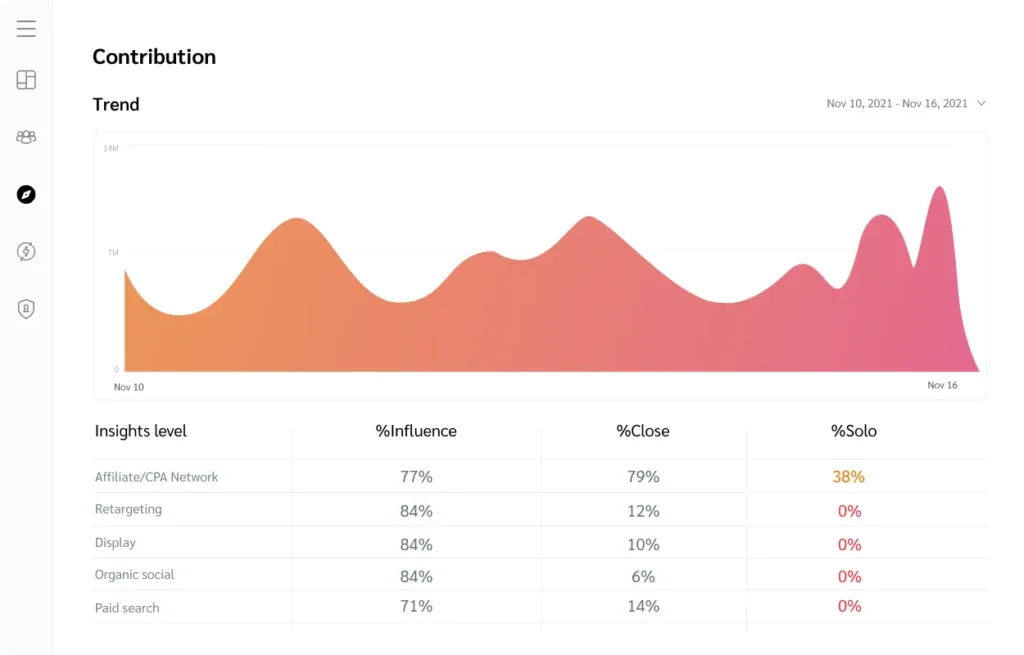
Unlike a good mobile partnership platform, an MMP doesn’t deal with post-install verification—a good way to reduce install fraud threats.
It makes sense for MMPs to exist with a mobile partnership platform. While a mobile partnership platform does a better job of tracking and fulfilling the unique requirements of the mobile partnership ecosystem, app development cycles often get in the way of the “ideal solution”—having your mobile partnership platform track everything in the partnership channel itself. Instead, you may rely only on data provided by your MMP.
This is why it’s important to find a mobile partnership solution that “works and plays well” with others in the space and integrates with all of the major MMPs.
Rely on a mobile partnership solution that gives you the option to either rely on an MMP (when you want to get up and running quickly) or one that handles deep linking and the tracking of your partnership channel on its own.
2. Flexible contracting
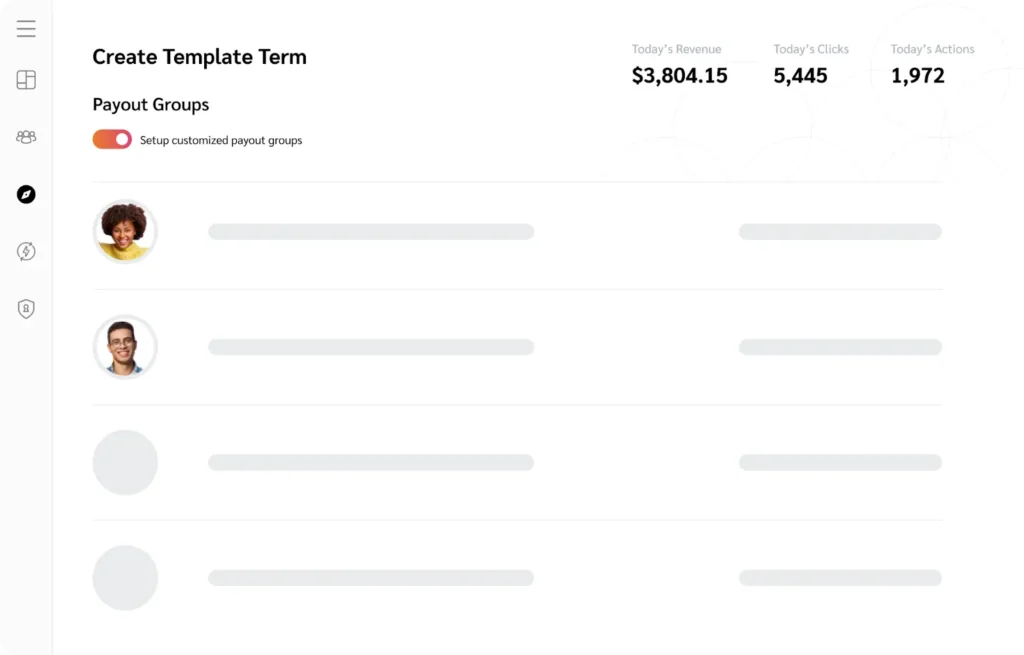
Flexible contracting lets you design contracts that incentivize in-app conversions and drive installs (or vice versa). Mobile websites have an abandoned shopping cart rate of around 86 percent. If you’re a retailer, that’s pretty awful, right? To compare, the equivalent metric on the desktop is 73 percent. Still bad, but a significant improvement.
On the flip side, the abandoned shopping cart rate on a mobile app is just 20 percent. With promising stats like these, anyone with a decent mobile app should be motivating mobile device users to download and transact on their app instead of their mobile website.
Apps tend to have a better user experience than mobile web. App users’ average order value (AOV) is 50 percent higher than the mobile web.
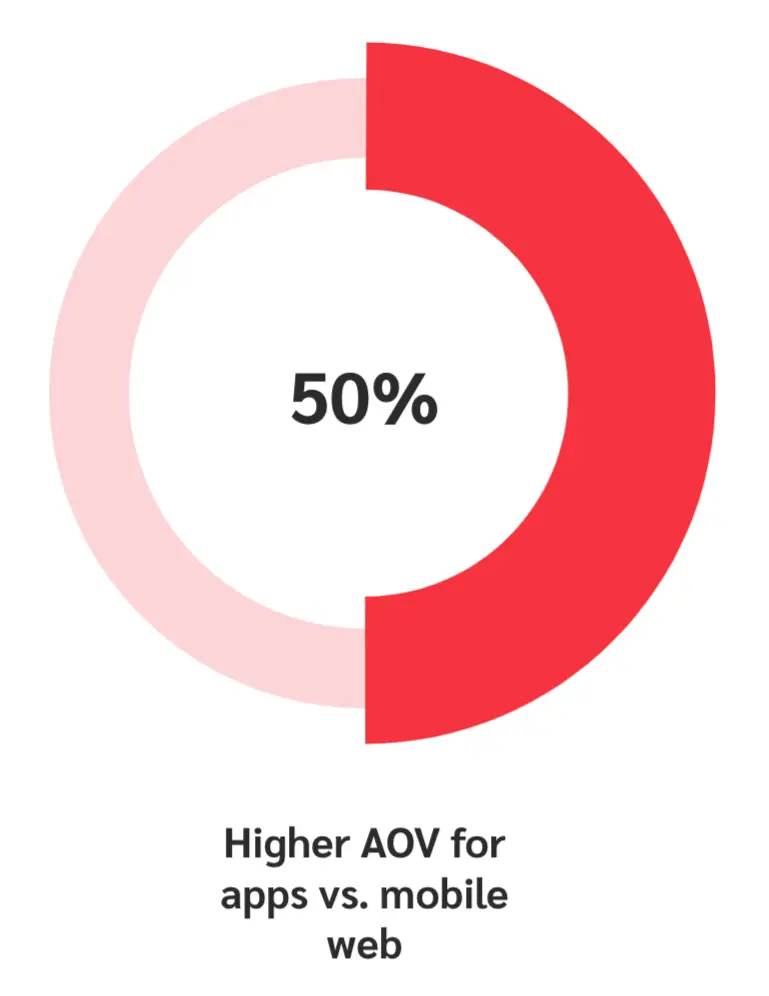
Encouraging your partners to funnel their valuable traffic into the app is important, since users are more likely to complete the desired action. How do you incentivize them in that direction? Unfortunately, many contracting solutions aren’t flexible enough to support the desired incentive structures to encourage this behavior.
You’ll want to design contracts that drive conversions, but you also want to add incentives that reward partners that drive app installs (that eventually lead to a mobile app conversion).
Savvy partners set up contracting rules to pay their partners a greater percentage of revenue if the transaction occurs on the mobile app. This is a great strategy for driving app re-engagement with the hope of making users more frequent repeat app visitors.
Other clients create contracts that pay an additional bonus if the partner drives the user to install the app and complete the transaction. They also create extra incentives for the user, For example, Pro:Direct Sport offers new users 10 percent off their first purchase if they install the app and make a purchase.
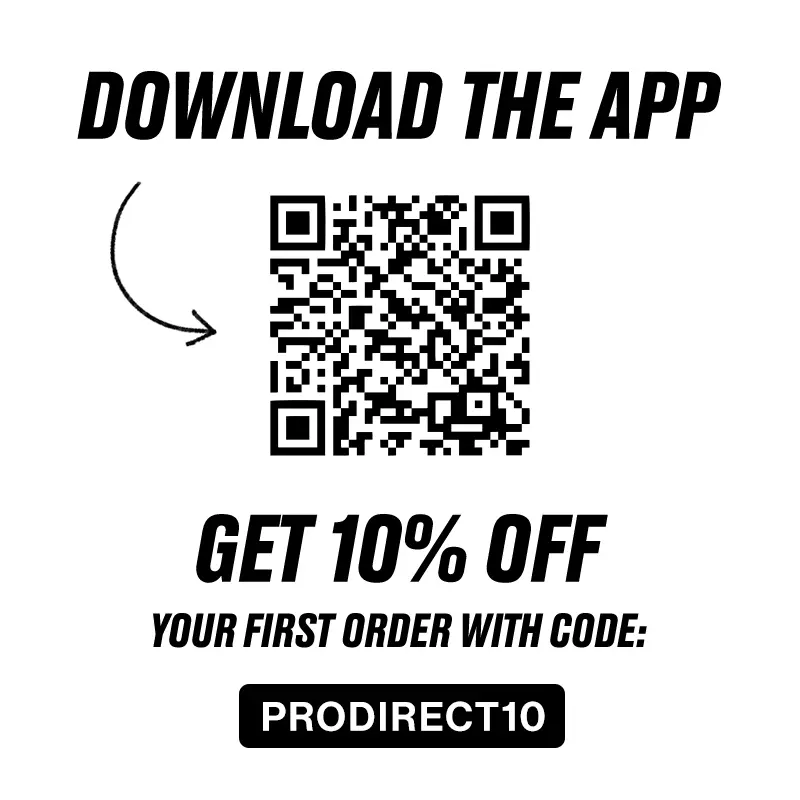
When a user installs the app and opens it for the first time, you can use impact.com’s TrueLink™ to deep link them to the relevant product page on the app.
Solutions such as impact.com’s Dynamic Payouts allow companies to leverage more than 100 attributes—from user geography, product, category, session information, and device and environment—to create just about any payout rule that can meet almost every business rule you desire.
Rely on a mobile partnership solution that’s flexible enough to create innovative incentives and allows you to implement contracts that encourage your mobile partners to drive in-app conversions and new app installs.
3. Cross-device insights
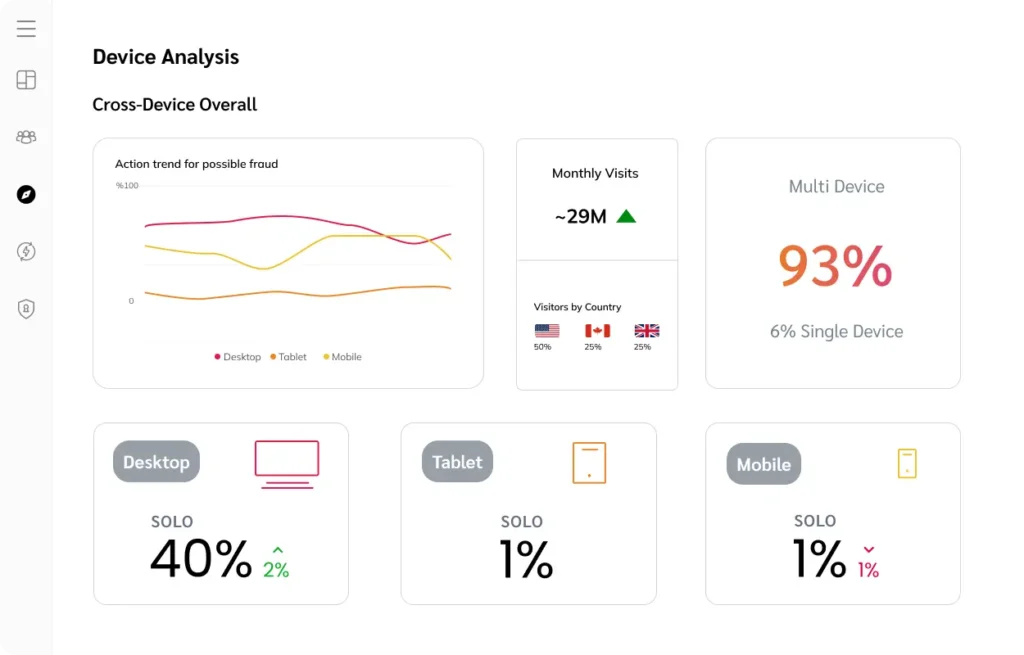
Ensure you reward partners who add value to app conversions, even when the touchpoint occurs on a different device.
Most partnership professionals know that consumers device-hop. They’re on their laptops at home, using their tablets while relaxing on the couch, and flipping through their phone on the go.
Around 80 percent of consumers bounce between devices, and 40% of online transactions involve multiple devices along the way.
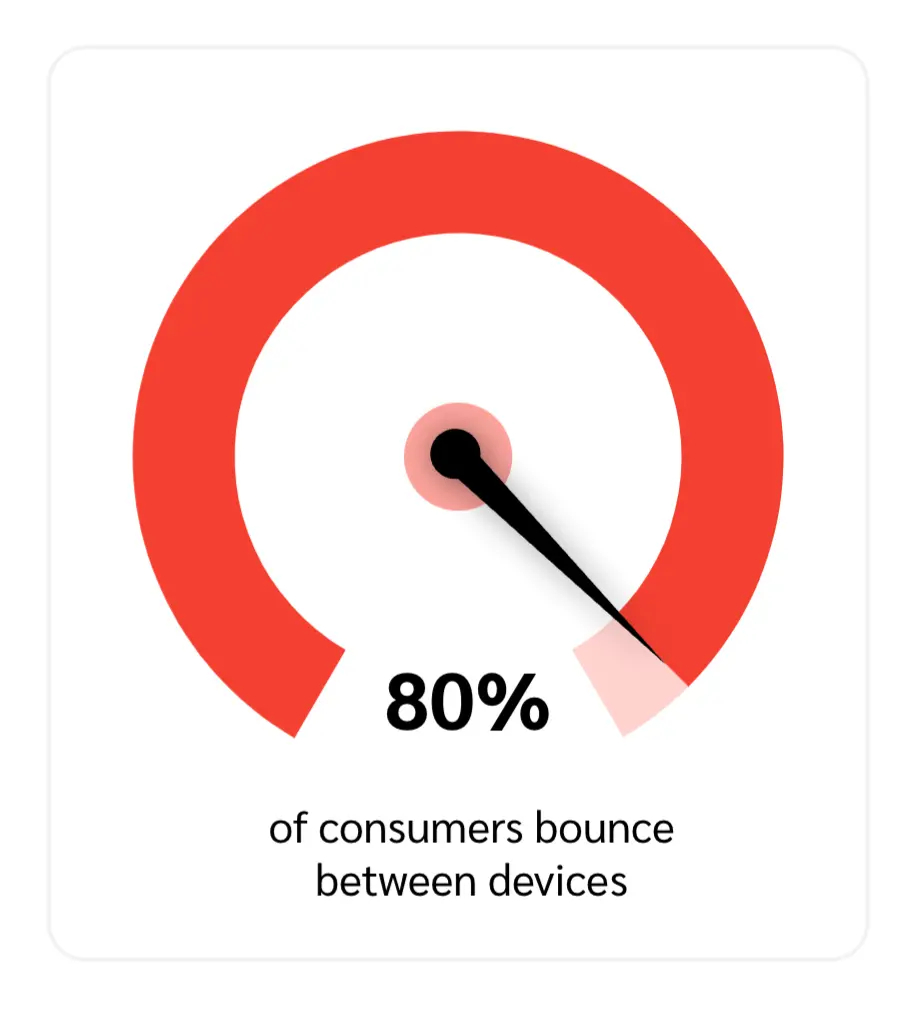
With a large share of journeys spanning across devices, a partnership manager needs to understand the role a partner has played in driving a conversion—even when the partner touched the user on a different device from the converting device.
For example, a blog post or a buyer’s guide site that the user reads on the desktop results in a mobile app conversion. You’d want to understand the whole customer journey so you can credit all partners involved.
Your mobile partnership solution must provide robust identity resolution infrastructure with insight into your customer journey analytics. With these capabilities, you can assess each partnership’s value, regardless of the device the user engages on.
Finally, your mobile partnership solution should allow you to define the payout rules to attribute credit to your value-driving partners, even if the user converts much later using a different device.
Rely on a mobile partnership solution that can dependably recognize users across all devices and provide trustworthy cross-device pathing and insight. This enables you to measure the true value of each mobile partner with confidence.
FAQs about Blue Ocean mobile app strategies
A Blue Ocean strategy includes four key elements:
-
- Raise
-
- Reduce
-
- Eliminate
-
- Create
A Blue Ocean strategy is for product marketers and developers who want to create a product or service that doesn’t face competition. Instead, their offering is a category creator.
A Blue Ocean Strategy has four main benefits:
-
- Less competitive marketspace
-
- No need to cut value-cost
-
- Easier to meet your target audience where they are
-
- More growth potential
Dive into a Blue Ocean marketing strategy for sustainable mobile app growth
When creating a Blue Ocean strategy, it’s key to collaborate with a technology partner who can help you navigate the mobile app learning curve easily.
With the right mobile partnership solution, you gain the unique capabilities needed to support the full potential of a Blue Ocean mobile partnerships strategy.
Ready to dive into better mobile app partnerships? Request a demo today.
Check out these additional reading materials:





